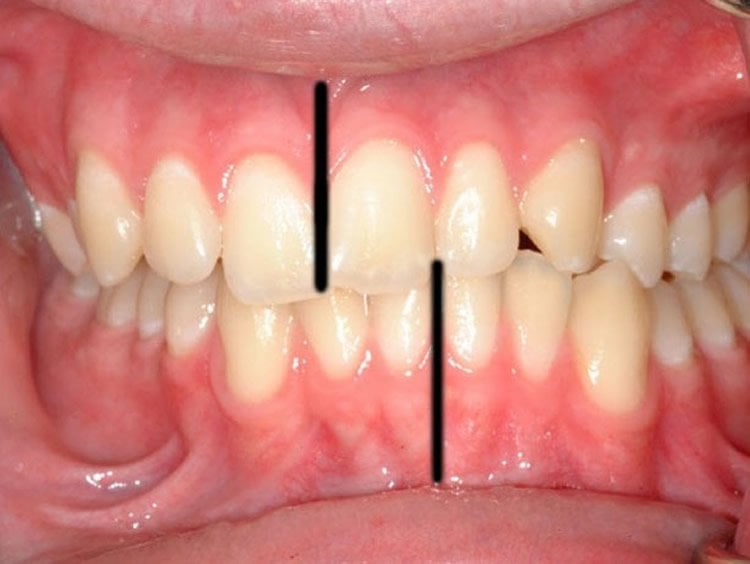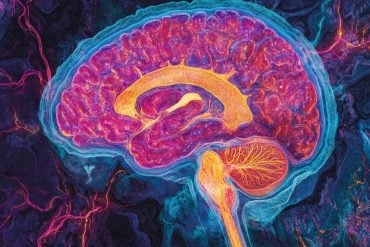Summary: New research proposes asymmetry in the lower face could be a novel marker that signifies early life stress.
Source: University of Washington.
Dentistry research ID novel marker for developmental instability.
Research has repeatedly confirmed that the first 1,000 days after conception strongly influence a person’s life expectancy and susceptibility to chronic diseases. The primary marker used to identify early life stress is low birth weight, which can, for instance, indicate poor nutrition of the mother during pregnancy.
But low birth weight is a marker only until birth, about 280 days – far short of a measurement useful for the first thousand days.
New research from University of Washington investigators suggests that an asymmetric lower face is a novel marker that also captures early life stresses that occur after birth.
“Asymmetries in the skull and teeth have been used for decades by anthropologists to mark environmental stress, but they have only rarely been used in living populations,” said Philippe Hujoel, the corresponding author. “Such lower-face asymmetries can be assessed by looking at the dental bite in the permanent teeth – an exam that can be completed in seconds and with more certainty than a mother’s recall of birth weight and more ease than a search for a birth certificate.”
Hujoel, a professor in the UW School of Dentistry, described a crooked, or asymmetric, bite as the teeth biting backward or forward on one side of the face and normally on the other side. Backward-biting asymmetries, the most common lower-face asymmetry in the U.S. population, were found to fluctuate randomly between the left and right sides of the face. Such randomness is evidence for early life stress, he said.
Hujoel emphasized that crooked teeth, overbites and underbites are different than an asymmetric bite. Those conditions can be associated with asymmetric and symmetric bites, the latter of which is largely a reflection of genetics, not environmental stress, he said.
Hujoel, Erin Masterson and Anne-Marie Bollen researched data gathered from 1966 to 1970, a sample of 6,654 12- to 17-year-olds involved in a National Health Examination Survey. The study found that one in four of the U.S. adolescents had lower-face asymmetries.

“Lower-face asymmetries were common in a generation that became typified by an epidemic of diabetes and obesity in adulthood,” noted Hujoel, an adjunct professor of epidemiololgy in the School of Public Health.
The team had to look back four decades for data because in the 1970’s, he said, dental researchers in charge of designing U.S. surveys began to disregard the value of diagnosing facial asymmetry, and stopped taking those measurements.
“From a biological perspective, this decision resulted in an inability to reliably track trends in the U.S.,” Hujoel said. “We don’t have current information on the prevalence of lower-face asymmetries in the U.S. population.”
Further research is needed to identify whether lower-face asymmetries are predictive of chronic diseases in living populations in the same way that skull asymmetries have been associated with degenerative diseases in long-deceased populations.
Source: Brian Donohue – University of Washington
Image Source: NeuroscienceNews.com image is credited to Philippe Hujoel.
Original Research: Abstract for “Lower face asymmetry as a marker for developmental instability” by Philippe P. Hujoel, Erin E. Masterson, and A-M Bollen in American Journal of Human Biology. Published online April 11 2017 doi:10.1002/ajhb.23005
[cbtabs][cbtab title=”MLA”]University of Washington “A Crooked Bite May Indicate Early Life Stress.” NeuroscienceNews. NeuroscienceNews, 15 April 2017.
<https://neurosciencenews.com/stress-crooked-bite-6420/>.[/cbtab][cbtab title=”APA”]University of Washington (2017, April 15). A Crooked Bite May Indicate Early Life Stress. NeuroscienceNew. Retrieved April 15, 2017 from https://neurosciencenews.com/stress-crooked-bite-6420/[/cbtab][cbtab title=”Chicago”]University of Washington “A Crooked Bite May Indicate Early Life Stress.” https://neurosciencenews.com/stress-crooked-bite-6420/ (accessed April 15, 2017).[/cbtab][/cbtabs]
Abstract
Lower face asymmetry as a marker for developmental instability
Objectives
Fluctuating asymmetries in the craniofacial skeleton have been shown to be predictive for mortality from degenerative diseases. We investigate whether lower face asymmetries are a potential marker for the developmental origins of health and disease.
Methods
The lower face of a representative sample of 6654 12- to 17-year old United States (US) adolescents (1966-1970, National Health Examination Survey III) was classified as asymmetric when the mandibular teeth occluded prognathically (forward) or retrognathically (backward) on one side of the face only. It was investigated whether these lower face asymmetries were directional (preferentially to the left or the right) or fluctuating (random left-right distribution) in the US population.
Results
Lower face asymmetries affected 1 in 4 of the US adolescents. Unilateral retrognathic dental occlusions were fluctuating asymmetries, had a US prevalence of 17.0% (95% confidence interval: 15.5-18.4) and were associated with race/ethnicity (P < .0001), not with handedness (P < .7607). Unilateral prognathic dental occlusions were directional asymmetries (P < .0001), had a US prevalence of 7.6% (95% confidence interval: 6.4-8.7) and were associated with large household size (P < .001) and handedness (P < .0223). Lower face asymmetries were not associated with distinct heritable traits such as color blindness.
Conclusions
The findings suggest that lower face asymmetries are a marker for environmental stress and cerebral lateralization during early development.
“Lower face asymmetry as a marker for developmental instability” by Philippe P. Hujoel, Erin E. Masterson, and A-M Bollen in American Journal of Human Biology. Published online April 11 2017 doi:10.1002/ajhb.23005






